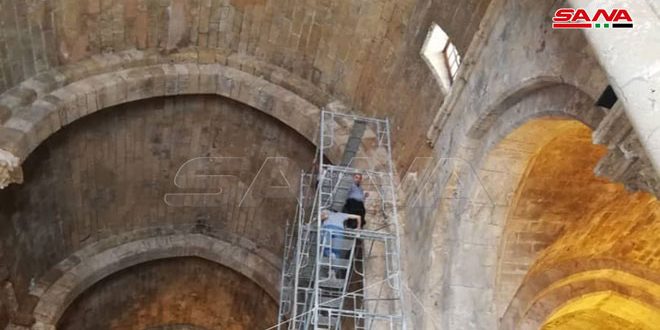A specialized team from the technical lab at the General Directorate of Antiquities and Museums began restoring and installing destroyed architectural elements in the cathedral of Tartous Museum.
Engineer Marwan Hassan, head of the Tartous Antiquities Department, stated that the work began according to precise plans, starting with the visual and written documentation of all stages, and then strengthening the stone using globally tested special materials that fit the type of building stone of the cathedral.
The second phase, according to Hassan, included preparing several mixtures using traditional materials that are suitable for the type and color of the stone to be tested in a specific part of the building. After that, the most suitable materials for the stone are selected to fill the gaps in the building, indicating that the restoration processes preserve the important and distinctive architectural elements of the cathedral building.
Hassan explained that the reason for carrying out the restoration operation is the damage that affected the stone in the cathedral due to the nature of the coastal environment and the proximity of the building to the sea. The moisture greatly affected the stones of the building, as the cathedral building stones absorb moisture greatly because they are limestone and contain sandstones.
He showed that the absorption and evaporation of moisture led to erosion and fragmentation in the building stones, especially in the capitals of columns, in addition to the stone cavities and gaps within the walls and columns.
It is worth noting that the Tartous Museum, with its current construction, is one of the most important archaeological buildings of its kind at the level of the governorate and Syria. It hosts the only cathedral that still exists with all its elements and architectural details, the most important of which is the presence of the oldest church in the world dedicated to the Virgin .
Amal Farhat

